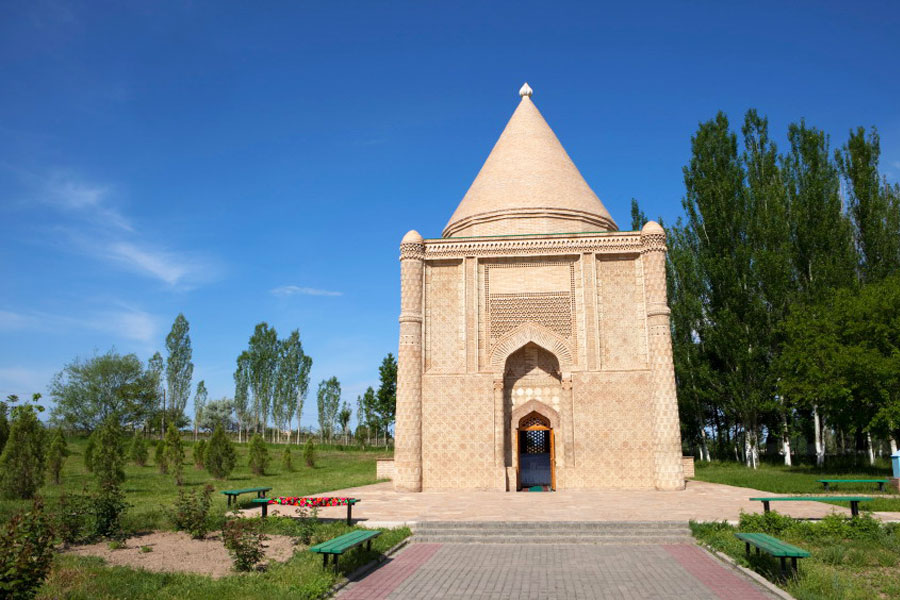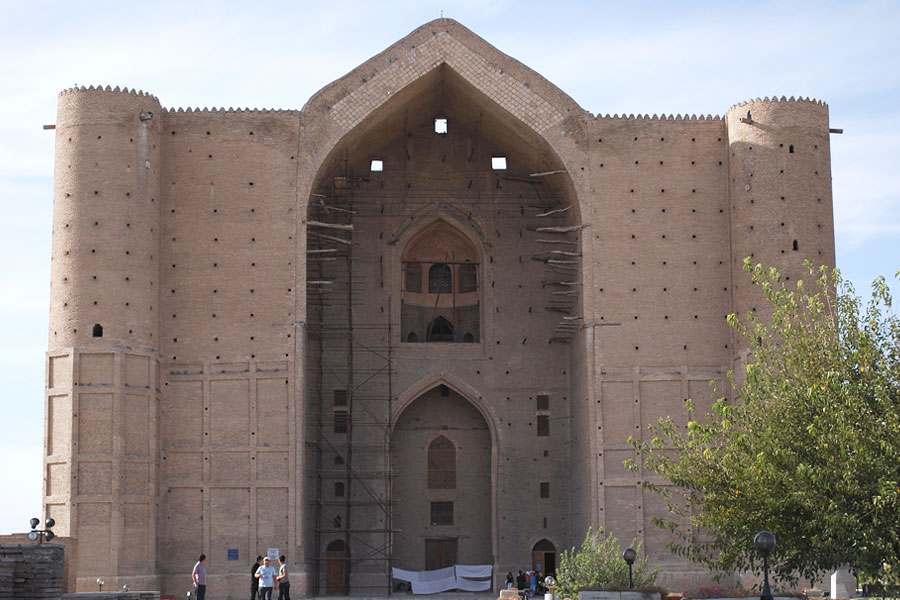Kazakhstan on the Silk Road

History of Kazakhstan in the period of the Great Silk Road
For centuries the Great Kazakh steppe accepted caravans of the Silk Road in oases of its cities and settlements.
On the territory of Kazakhstan the Silk Road started from the borders of China. Merchants of Celestial Empire carried silk, weapons, medicines, rice, exotic goods such as tusks across Kazakh steppes to the West, to Europe. Steppe governors offered their services of safety provision for trade caravans; in exchange they demanded a share of the goods or cash. That was how quitrents or taxes and customs duties emerged.
The main line of the Silk Road on the territory of Kazakhstan lay across the country’s south; from the border with China trade caravans moved through the cities of Sayram, Yassy, Otrar, Taraz and further to Central Asia, Persia, to the Caucasus and from there to Europe.

The reason that all those cities emerged is that the merchants traveling across the enormous Kazakh steppes made stops which turned into caravanserais and those in turn grew into settlements which further became cities.
The main route of the Silk Road in the region went across Semirechye and South Kazakhstan. The first time this sector started functioning was in the second half of the 6th century when Semirechye and South Kazakhstan became parts of Turkic Khaganate, the huge nomadic empire stretching from Korea to the Black Sea. In the late 6th century the Khaganate broke up into Eastern Turkic and Western Turkic ones. Semirechye became the center of Western Turkic khaganate with the capital in the city of Suyab. A variety of new cities emerged in Semirechye, and in the south of Kazakhstan the cities which were built on the Silk Road or were connected with it by trade relations grew the most. The largest of them were Suyab, Taraz and Ispidzhab.
The Silk Road across Semirechye and South Kazakhstan functioned until the 14th century when the civil strife and wars destroyed the city. Its last revival occurred in the middle of the 13th century when the route was used by trade and diplomatic embassies moving to Korakorum, the capital of Mongolian Empire.


